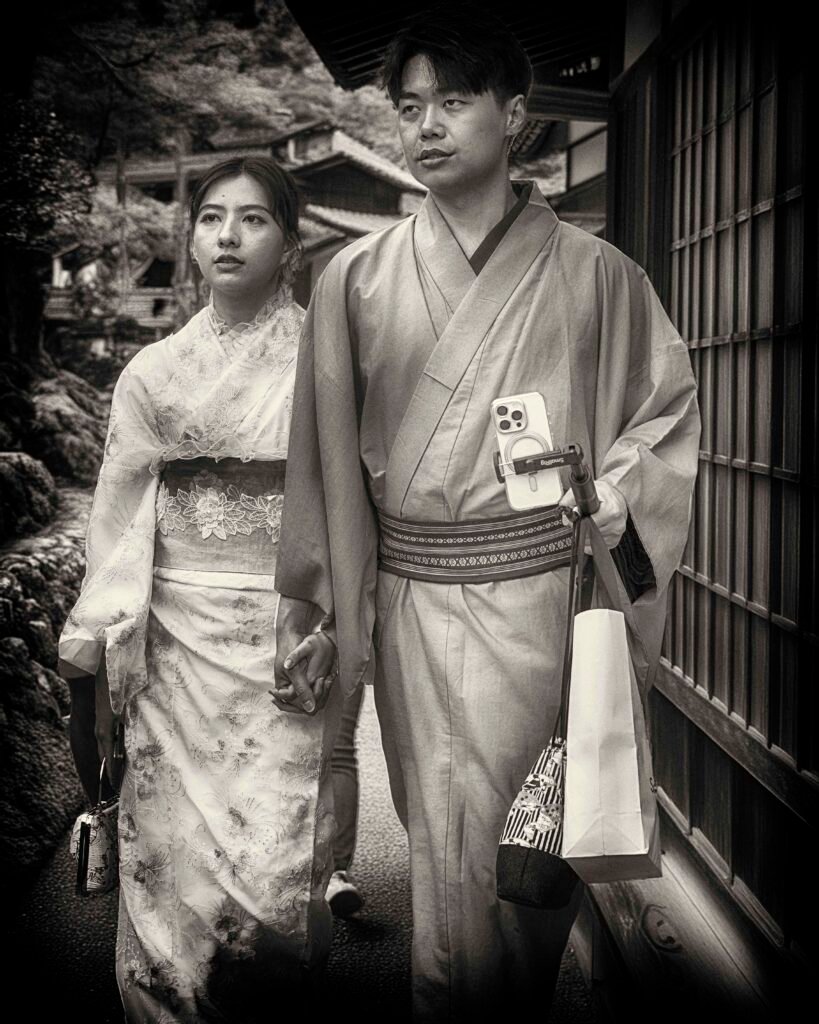
They walk side by side, not touching, not speaking—
but the silence between them is warm, not cold.
He wears a dark blue hakama, pleated and crisp, the sleeves of his kimono tucked just so. His hair is neatly parted, his posture measured, respectful. She wears a soft pink furisode, its long sleeves swaying like brushstrokes as she moves. Her obi is tied in a proud, perfect bow. Gold threads catch the sun when she turns, and her hair is adorned with a single camellia clip, delicate as breath.
They are young—certainly in their twenties. Their faces hold no makeup of age, no burden of years. And yet they move with the grace of those who understand the rhythm of things older than themselves.
The city around them hums. Lanterns sway gently above narrow streets. A tourist’s camera clicks in the distance. The scent of roasted chestnuts and tatami straw floats in the breeze. But the couple walks on, slightly slower than the world, as if they have stepped into another time.
Children glance up at them with wide eyes. Elderly shopkeepers smile with knowing approval. A foreigner asks, “Are they actors?”—but the locals shake their heads.
No.
They are not actors.
They are simply two young souls who have chosen, for this moment, to wear their country’s beauty on their skin.
They do not speak much as they walk, but when she adjusts her sleeve and he notices, he pauses. She smiles, and he dips his head—not as a bow, but as a gesture so old and tender it feels like poetry.
When they reach a red torii gate, she places her hand briefly on the wood. He watches, quiet. Then they pass through together—one step, then another, as bells ring faintly in the distance.
Somewhere behind them, the modern world ticks and shouts. But here, between temple stone and bamboo shade, they are a painting in motion—fleeting, graceful, and held gently in memory’s frame.